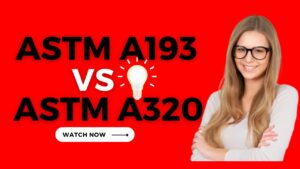1. Piping for spiral and Plate exchangers
Why is careful consideration required of Piping for spiral and Plate exchangers?
Explanation: Careful piping arrangements for spiral exchangers are crucial to ensure adequate access for maintenance and operation due to their compact design.
2. Spiral Exchanger Controls
Where should controls for spiral exchangers be located?
Explanation: Controls for spiral exchangers should be located at the ends of the unit, away from the cover plate swing area, to ensure easy accessibility for operation and maintenance.
3. Break Flanges in Spiral Exchangers
Why should piping connections to cover plate nozzles on spiral exchangers be equipped with break flanges?
Explanation: Break flanges on piping connections allow for quick and easy removal of the piping without disassembling the entire exchanger, facilitating maintenance.
4. Plate Exchanger Maintenance
Why is careful piping arrangement crucial for effective maintenance of plate exchangers?
Explanation: Careful piping arrangements for plate exchangers are crucial to ensure unrestricted opening of covers and plate removal, facilitating effective maintenance.
5. Plate Exchanger Control Placement
Where should controls for plate exchangers be positioned for easy access?
Explanation: Controls for plate exchangers should be positioned at the front and one side of the exchanger for easy access during operation and maintenance.
6. Piping Elevation for Plate Exchangers
Why is it recommended to elevate piping around plate exchangers?
Explanation: Elevating piping around plate exchangers provides clearance from grade for maintenance and operation, preventing potential damage from ground-level equipment or debris.
7. Plate Exchanger Plate Removal
Why is strategic placement of piping important for plate exchangers during plate removal?
Explanation: Strategic placement of piping around plate exchangers is important to avoid interference with the plate removal process during maintenance.
Short Article on Piping for spiral and plate exchangers
Heat exchanger piping considerations for spiral and plate exchangers.
Spiral Exchangers
Spiral exchangers are a type of heat exchanger that uses a spiral-wound channel to achieve high heat transfer efficiency in a compact design. Due to their compact nature, careful consideration must be given to piping arrangements to ensure adequate access for maintenance and operation.
- Cover Opening and Plate Removal: The piping around spiral exchangers should be arranged to allow for unobstructed opening of the cover plates and removal of plates for maintenance. This may require offsetting or rerouting piping to avoid interference.
- Control Placement: Controls for spiral exchangers should be located at the ends of the unit, away from the cover plate swing area. This ensures that controls are easily accessible for operation and maintenance without hindering access to the exchanger internals.
- Piping Connections: Piping connections to cover plate nozzles on spiral exchangers should be equipped with break flanges. Break flanges allow for quick and easy removal of the piping without the need to disassemble the entire exchanger.
- Piping Elevation: Elevate the piping to provide adequate clearance from grade for maintenance activities. This also allows for easier operation of valves and minimizes the risk of damage from ground-level equipment or debris.
Plate Exchangers
Plate exchangers are another type of heat exchanger that utilizes a series of thin plates to transfer heat between two fluids. Similar to spiral exchangers, careful piping arrangements are crucial for effective maintenance and operation.

- Cover Opening and Plate Removal: Ensure that the piping arrangement around plate exchangers allows for unrestricted opening of the covers and removal of plates for maintenance. This may require strategic placement of piping to avoid interference with the plate removal process.
- Control Placement: Position controls for plate exchangers at the front and one side of the exchanger for easy access. This placement ensures that controls are readily accessible for operation and maintenance without obstructing the flow of personnel or equipment.
- Piping Elevation: Elevate the piping to provide adequate clearance from grade for maintenance purposes and convenient operation of valves. This elevation also prevents damage from ground-level equipment or debris.
Table of Contents
Don’t miss the Course on Effective Isometrics Management: Check Now
Enrollment Link
Recommended courses (Published on EPCLand)
- Complete Course on Piping Engineering
- Basics of Piping Engineering
- Piping Layout Engineering
- Piping Material Engineering
- Piping Stress Analysis
- Material Requisitions
- Piping Material Specifications
- Valve Material Specifications
- Plant Design & Layouts-OISD 118
- Isometric Management
Library of Technical Articles
Don’t miss out the collection of 15+ articles on following topics:
- Basics of Oil and Gas Industry
- Valves
- Testing
- Tank
- Piping Bulk Items
- Pipe
- Metallurgy
- Piping Materials
- Layout
- Instrumentation
- Heat Exchanger
- Type of Contracts
- Codes and Standards
- ASTM Standards
- Articles on Piping Specialty Items
Video details of Complete Course on Piping Engineering
Why Enroll in the EPCLand
Proven Track Record– PTR
Activities & Achievements before launching EPCLand
- Published more than 50+ short courses
- 3000+ Enrolments
- More than 3,500,00 Minutes of watch hours in the last 2 years
- 4000+ Students in 100+ Countries
- Rating of 4+ out of 5
- 1000+ YouTube Videos
- 8K+ Subscribers
What Students will Learn
- Codes & Standards of the Energy Sector
- Piping Material Engineering
- Piping Layout Engineering
- Stress Analysis
Interesting facts
- All the published courses have been developed by Industry Experts with more than 2 decades of experience
- Content is based on Practical experience and real-time problems.
- Content is designed and organized in such a manner that it can be easily grabbed.
- Complete website, Blogs and Quiz sections are Planned, Designed and published by myself (About me: Atul Singla)
- Complete flexibility of Time & Location, Students can access the content from anywhere & anytime
- Moreover, once enrolled, the content can be access as many times as you want, which helps in understand the fundamentals in a better way.
Conclusion
In conclusion, our courses are meticulously crafted by industry experts with over two decades of hands-on experience. The content is rooted in practical knowledge, addressing real-time problems. The material is thoughtfully designed and organized for easy comprehension. Every aspect, from the website to blogs and quizzes, has been planned, designed, and executed by Atul Singla, ensuring a comprehensive and seamless learning experience. With the flexibility of accessing the content at any time and from any location, students have the freedom to learn on their terms. Furthermore, enrollment grants unlimited access, allowing learners to revisit the material as often as needed, fostering a deep understanding of the fundamentals.



